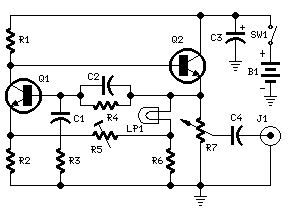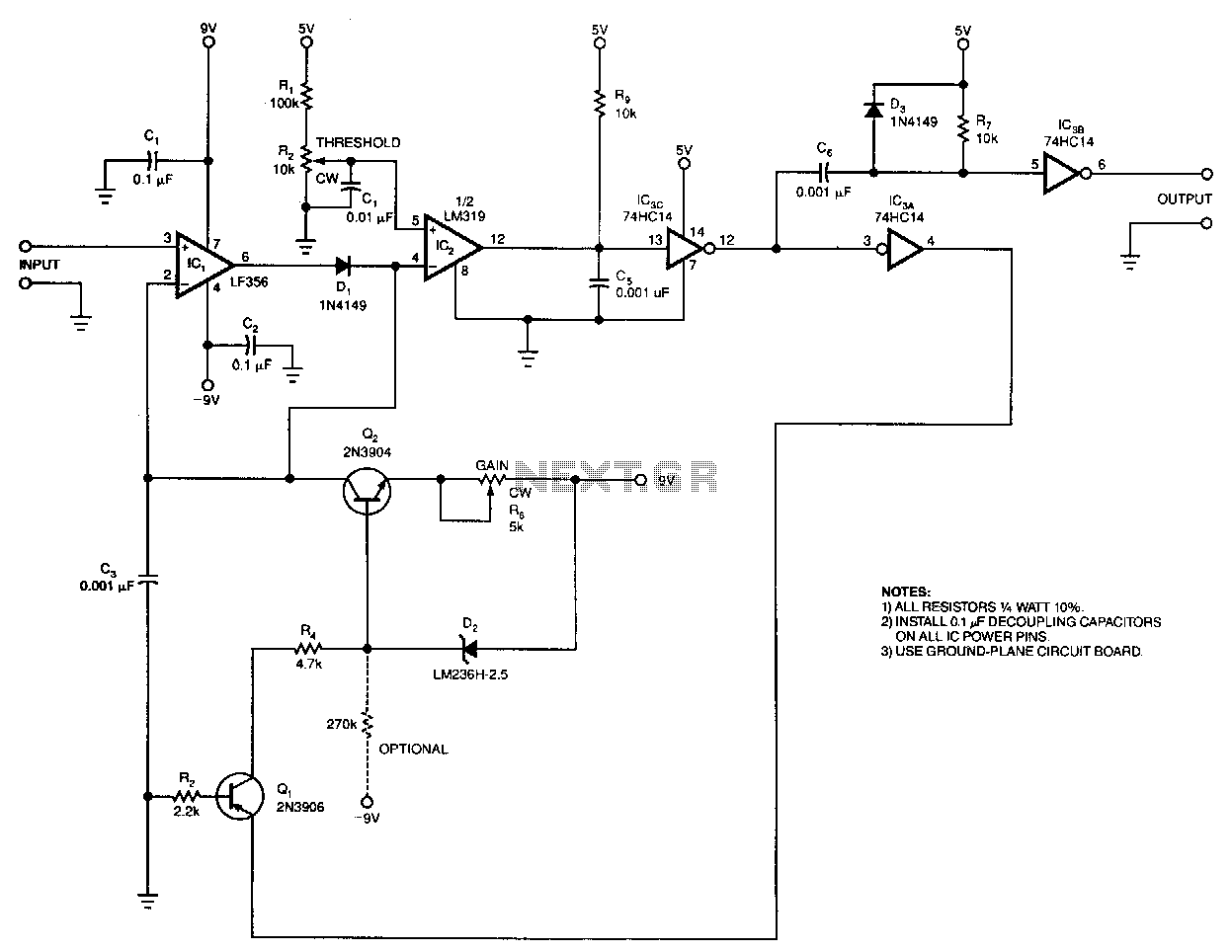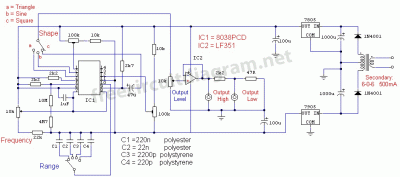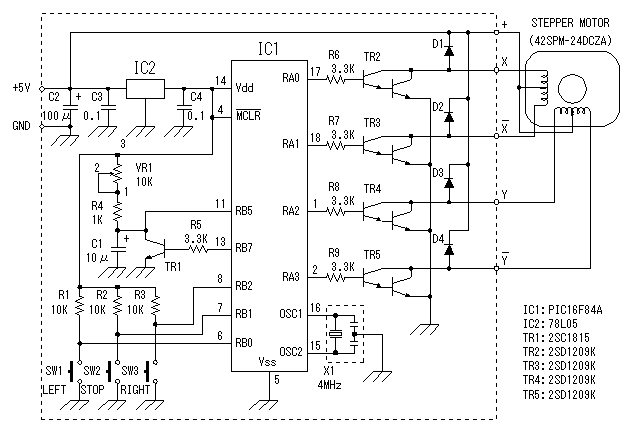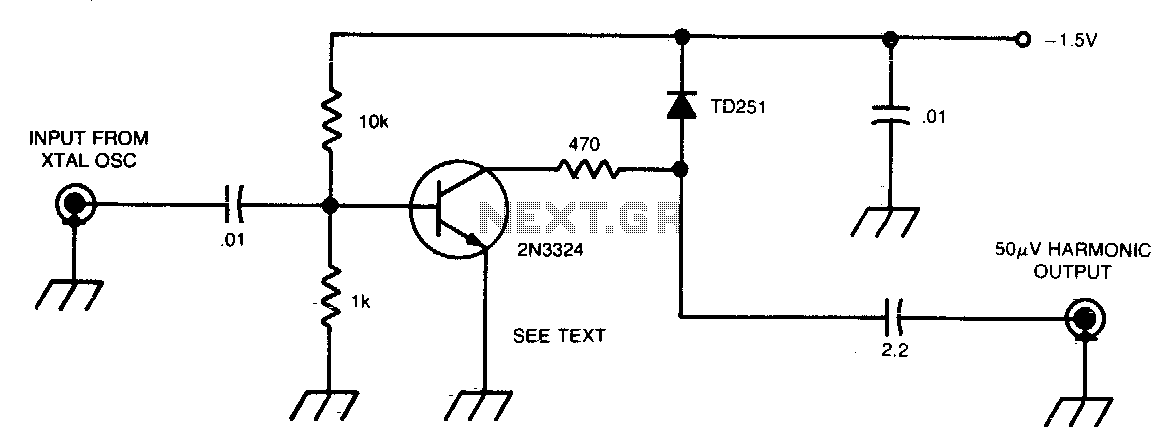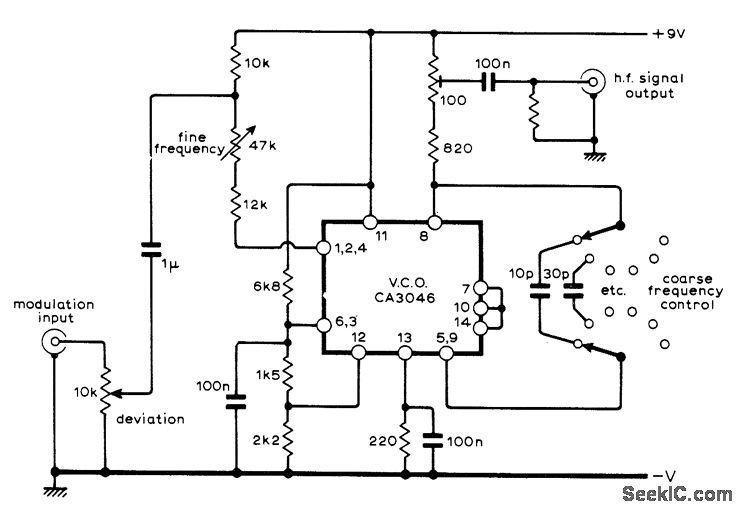
Explanation of Bedini’s Pulse Motor and Generator
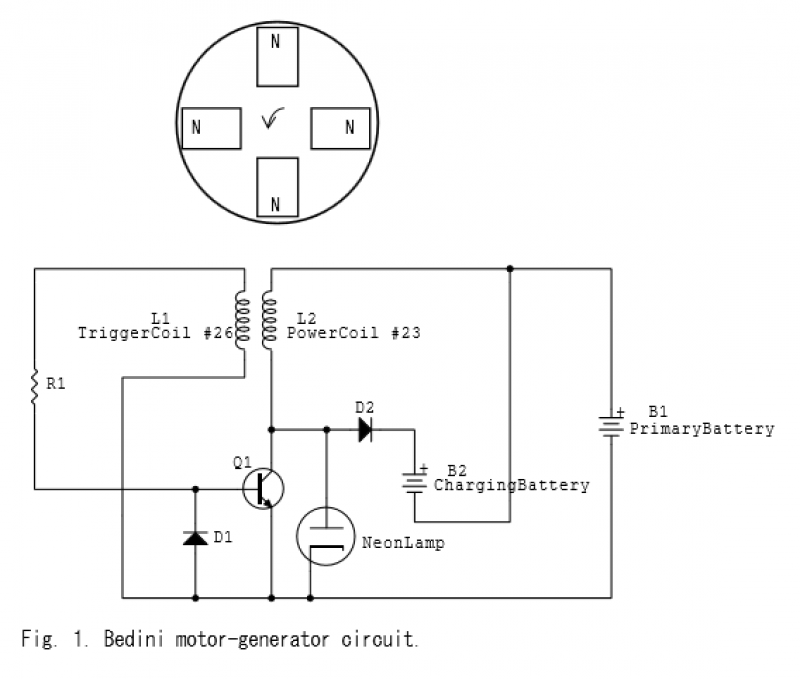
When the magnet approaches, the magnetic flux within the bifilar coil increases. An opposing magnetic flux is generated by the coil, resulting in an electromotive force (EMF) across inductors L1 and L2. The EMF across L1 applies a positive voltage to the base-emitter (B-E) terminals of transistor Q1, turning it on. Q1 rapidly saturates, allowing a high current to flow from battery B1, which builds a strong magnetic field within the coil. Since L1 and L2 share the same core, L1 produces an opposing flux that repels the magnet. As the magnet moves away, the flux within the coil decreases, inducing an EMF across L1 that applies a negative pulse to the B-E terminals, turning Q1 off. Consequently, the collector current is sharply cut off. As the magnetic field within L2 collapses, a high voltage spike is generated by L2, which charges battery B2.
The described circuit utilizes a bifilar coil configuration, which consists of two closely wound coils that share a common magnetic core. The operation is based on electromagnetic induction principles. When a magnet approaches the coil, the change in magnetic flux induces an EMF in the coils. The resulting positive voltage at the base-emitter junction of transistor Q1 allows it to enter saturation, enabling a substantial current flow from the power source (B1) to the load. This current flow enhances the magnetic field in the coil, creating an opposing magnetic force that pushes the magnet away.
Upon the magnet's departure, the reduction in magnetic flux reverses the induced EMF across L1, applying a negative pulse to the base-emitter junction of Q1. This pulse causes Q1 to turn off, resulting in a rapid decrease in collector current. The collapse of the magnetic field in L2 induces a high voltage spike, which can be used to charge an additional energy storage element, such as battery B2. The interaction between the coils, the transistor, and the magnetic field exemplifies the principles of inductive coupling and energy transfer in electromagnetic systems. This circuit can be applied in various applications, including energy harvesting, magnetic field sensing, and electromagnetic actuation systems.When the magnet approaches, N flux inside the bifilar coil increases. An opposing flux is produced by the coil and an EMF is generated across L1 and L2. The EMF across L1 applies + voltage to B-E terminals of Q1 and turns it ON. Q1 saturates rapidly and a high current is withdrawn from B1. This current builds a strong magnetic field inside the coil. Since L1 and L2 share the same core, an opposing flux is produced by L1 and the magnet is pushed away.
The described circuit utilizes a bifilar coil configuration, which consists of two closely wound coils that share a common magnetic core. The operation is based on electromagnetic induction principles. When a magnet approaches the coil, the change in magnetic flux induces an EMF in the coils. The resulting positive voltage at the base-emitter junction of transistor Q1 allows it to enter saturation, enabling a substantial current flow from the power source (B1) to the load. This current flow enhances the magnetic field in the coil, creating an opposing magnetic force that pushes the magnet away.
Upon the magnet's departure, the reduction in magnetic flux reverses the induced EMF across L1, applying a negative pulse to the base-emitter junction of Q1. This pulse causes Q1 to turn off, resulting in a rapid decrease in collector current. The collapse of the magnetic field in L2 induces a high voltage spike, which can be used to charge an additional energy storage element, such as battery B2. The interaction between the coils, the transistor, and the magnetic field exemplifies the principles of inductive coupling and energy transfer in electromagnetic systems. This circuit can be applied in various applications, including energy harvesting, magnetic field sensing, and electromagnetic actuation systems.When the magnet approaches, N flux inside the bifilar coil increases. An opposing flux is produced by the coil and an EMF is generated across L1 and L2. The EMF across L1 applies + voltage to B-E terminals of Q1 and turns it ON. Q1 saturates rapidly and a high current is withdrawn from B1. This current builds a strong magnetic field inside the coil. Since L1 and L2 share the same core, an opposing flux is produced by L1 and the magnet is pushed away.
As the magnet goes away, the flux inside the coil decreases. An EMF is induced across L1 that applies - pulse at B-E terminals and Q1 is turned OFF.
Consequently, collector current is cut sharply. As the magnetic field inside L2 collapses, a high voltage spike is produced by L2 that charges B2.
by 4beowulf7 - [email protected]
